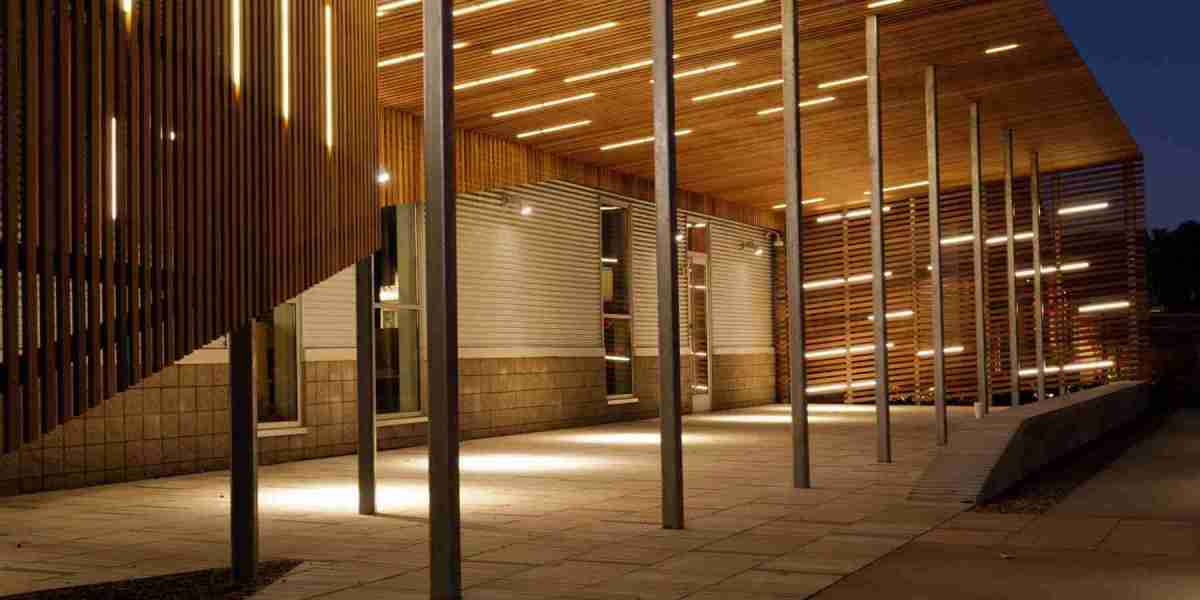Outdoor lighting has come a long way from basic street lamps and floodlights. Today, it's a central piece of urban design, public safety, and energy policy. As cities grow and technology continues to evolve, the outdoor lighting market is revealing an even broader potential spanning smart city infrastructure, environmental sustainability, and advanced design applications.
While the market is already well-established, its full potential is still unfolding. In this post, we’ll take a closer look at the untapped opportunities within the outdoor lighting sector and why this space is one to watch over the next decade.
A Growing Global Opportunity
To start with the basics: the global outdoor lighting market is growing steadily. Current estimates value it between $13 and $15 billion, with forecasts projecting it could surpass $22 billion by 2030. That’s solid growth, but what’s really driving interest is the quality of the growth—driven not just by population expansion, but by innovation and new applications.
Rapid urbanization in emerging markets is one obvious driver. As cities expand and infrastructure scales to keep pace, outdoor lighting is among the top investments made by governments and developers alike. Public lighting is closely tied to both safety and economic activity, making it a critical piece of any new development.
At the same time, mature economies are undergoing a large-scale transformation of aging lighting systems. Energy inefficiencies, high maintenance costs, and policy pressure to lower emissions are leading to a wave of retrofitting projects. All of this points to strong and sustained demand, not just for lighting hardware, but for advanced lighting solutions.
Smart Cities and Intelligent Infrastructure
One of the most promising areas of market potential lies in smart lighting. As part of broader smart city initiatives, outdoor lighting is increasingly being integrated into connected infrastructure systems. These smart systems can monitor activity, adapt to conditions in real-time, and even help cities manage resources more efficiently.
For example, motion-sensor lighting can conserve energy by dimming in low-traffic areas and brightening when movement is detected. Lights connected to a central platform can report outages, reducing downtime and improving public service delivery. Some systems can even gather environmental data—such as air quality or noise levels—helping cities manage their ecosystems more effectively.
The potential here is massive. As more cities around the world pursue digital transformation, smart lighting can become a foundational piece of the puzzle. And since the technology is still evolving, there’s room for new players and innovations to enter the field.
The Renewable Angle: Solar and Sustainability
Another key growth vector is the rise of solar-powered outdoor lighting. With increasing global attention on clean energy and carbon reduction, solar lighting is becoming a go-to solution in both urban and rural contexts. It's especially promising for areas with limited or unreliable access to power grids.
What makes solar lighting especially appealing is that it solves both economic and environmental challenges. It eliminates electricity costs, reduces maintenance, and supports sustainability goals—without compromising on performance. As solar panels, batteries, and LED technologies continue to improve, solar lighting systems are becoming more powerful and affordable.
Governments are increasingly incorporating these systems into infrastructure projects, especially in developing nations. That’s opening new frontiers for manufacturers and service providers focused on off-grid and low-maintenance solutions.
Design, Aesthetics, and Customization
While functionality has always been the core of outdoor lighting, aesthetics are playing a growing role in its potential. Today’s lighting systems don’t just light the way—they shape how people experience public spaces. From architectural lighting to programmable color displays, lighting is now a tool for placemaking and storytelling.
Commercial developments, tourist districts, hotels, and mixed-use properties are investing in customized outdoor lighting to enhance brand identity and user experience. This opens up opportunities for designers, architects, and tech companies to collaborate on highly specialized projects.
The demand for programmable, dynamic lighting is also leading to innovation in control systems and user interfaces, creating additional value beyond the physical lighting hardware.
Untapped Niches and Emerging Applications
There’s also notable potential in niche and emerging segments. For instance:
Industrial and logistics facilities require robust, reliable outdoor lighting that can handle high activity and harsh weather.
Educational and healthcare campuses are adopting lighting systems to improve security while keeping energy costs low.
Event and entertainment venues increasingly rely on advanced outdoor lighting to support flexible programming and immersive experiences.
As more industries recognize the strategic value of lighting—beyond simple illumination—the range of use cases will only grow.
Final Thoughts
The outdoor lighting market is far more than a utility sector. It’s evolving into a multi-dimensional space that blends energy, technology, design, and public policy. With demand coming from both ends—developing markets building from scratch and developed markets modernizing—it’s positioned for robust, long-term growth.
The potential is enormous, not just in financial terms but in impact. The right lighting can make a city safer, more sustainable, and more livable. It can improve business operations, enhance community pride, and even support environmental goals. For businesses, planners, and innovators, outdoor lighting offers a bright and expanding horizon.




